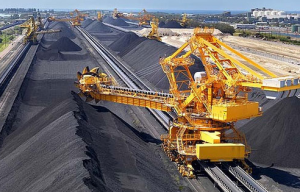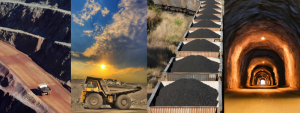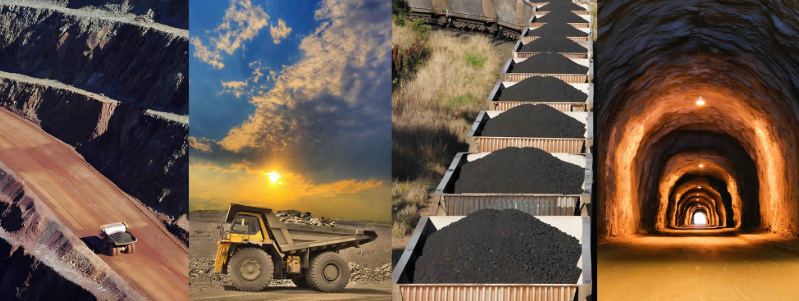More than 70% of the western U.S. has been hit by drought, while China has been suffering from a national shortage of water and energy resources, prompting plans to develop 172 major water projects by 2020, says Paul Simpson of the CDP research firm working for institutional investors.
A survey by CDP of the world’s largest listed companies finds an increasing number of corporate executives say water is or soon will become a restraint on their corporate growth. In the CDP Global Water Report 2014, more than two-thirds of the Global 500 companies reported substantive water risks, “therefore investing to conserve, manage or obtain water has become crucial for some sectors,” said Simpson.

For instance, BHP Billiton has invested nearly US$2 billion “in a desalination plant in Chile to ensure adequate water is available for its desert mining operation,”’ he noted.
“Competition for scarce water resources is leading to business disruption, brand damage and the loss of the license to operate. A lack of water, or insufficient water of the right quality, can cut or even halt production,” observed the survey. “This is of growing concern to institutional investors as evidenced by investors’ support for CDP’s water programs.”
573 financial institutions with assets of US$60 trillion were signatories to the CDP 2013 water questionnaire dated Feb. 1, 2014.
“CDP investor signatories are essentially seeking the answer to one question: what shareholder value is put at risk by poor management of water exposures?” said the report. “They are concerned about potential impacts to the bottom line, and about the threats that poorly understood and managed water impacts pose to the future performance of their investments.”
The organization’s CEO Water Mandate defines water stress as having three core components: water availability; water quality; and water accessibility. “Compared to water scarcity, water stress is a broader concept as it considers several physical aspects related to water resources, including scarcity, but also water quality, environmental flows and the accessibility of water.”
“The good news is that respondents are increasingly acknowledging the importance of water security as a corporate issue,” said CDP. “The responses to CDP’s water questionnaire this year show clear progress on some of the most important indicators of effective water risk monitoring and management.”
“Furthermore, analysis shows that companies exposed to water risk are prepared to invest—in technological improvements, monitoring, and staff training, among other things—to minimize those risks,” said CDP.

Among the technical solutions highlighted in water monitoring by the report is Vale, which “has invested US$8 million in monitoring systems to track changes in precipitation patterns, allowing it to take any preventative measures necessary.”
Nevertheless, CDP finds that while in some cases, “companies may be able to engineer solutions that secure their own water needs, this may do little to address the underlying risk drivers. There is little advantage to being a clean fish in a dirty pond.”
“Furthermore, those parts of the world that offer the greatest potential for economic growth in the years to come are also those that are at most risk from water stress,” the report advised.
The materials sector, including mining, provided a high rate of response to the CDP water survey as 73% companies responded. The majority of metals & mining companies answered the survey including Anglo American, AngloGold Ashanti, Amplats, Antofagasta, Barrick Gold, BHP Billiton, Fortescue Metals, Freeport-McMoRan, Fresnillo, Glencore, Gold Fields, Harmony Gold Mining, Hitachi Metals, Impala Platinum, Newcrest Mining, Newmont Mining, Northam Platinum, PotashCorp, Rio Tinto, Sumitomo Metal Mining and Vale. Among the mining companies that did not respond to the survey were Cliffs Natural Resources, Grupo Mexico, Randgold Resources and Southern Copper.
Among the survey’s key findings within the materials sector: Almost half of the respondent experienced detrimental water impacts in the last report year, the second highest among all the sectors; and 80% of respondents have committed to both goals and water targets this year.

In the risk analysis portion of the materials sector survey, 64% of respondents report that water poses a substantial risk to their businesses. 14 respondents reported a total of 118 risks, 47% of which are expected to materialize within the next three years.
A wide range of risk drivers were reported with 54% of them physical, including increased water stress or scarcity. Thirty three percent of drivers fell under regulatory risk, such as increased difficulty in obtaining operations permits, and 7% were reputational.
“Respondents are pursuing a wide range of response strategies including engagement with suppliers (11%), engagement with policy makers (8%), compliance with local legal requirements (7%), and supplier diversification (6%),” said the survey.
“For example, Anglo American implements water efficiency and conservation measures and works with government to develop sector water efficiency targets aligned with principles of water conservation and demand management,” CDP cited.

